Virtualization
NFV License Management: The Missing Piece of the Puzzle

Ever experienced the annoyance of trying to install or reinstall licensed software on your PC only to find that you lost the license key? Imagine the challenge of managing software licenses in a large complex organization such as a telecommunications operator with hundreds, if not thousands or even tens of thousands, of licenses spread across many critical systems. How many licenses are in use at any given moment? How many are expired or technically in breach of commercial agreements with vendors?
I could go on, but you get the gist. Software license management in the telecommunications environment is about to become an order of magnitude more complex as NFV emerges from the shadows to become the technology of choice for future telecommunications network infrastructures!
Physical network appliances, purchased with a packet of software licenses, wrapped up in a commercial agreement with a single vendor and fixed for several years are about to be displaced by racks of servers running thousands of ephemeral instances of Virtual Network Functions (VNFs) and other types of critical software originating from a myriad of diverse sources - and changing minute by minute according to changing demands on the network.
Welcome to the brave new world of NFV.
How Software Licensing Underpins the Economic Viability of NFV
As one of the leaders of the group of network operators who introduced the NFV concept in 2012, I have been aware since the very beginning of the critical role that software licenses will play in the economics of NFV. Once a rack of servers is installed, software licensing becomes a significant recurring cost, as anyone who purchases software will know all too well. It might seem obvious, but there shouldn’t be any technical barriers to the implementation (and enforcement) of any type of commercial licensing agreement between network operators and software providers.
The ability to negotiate and concurrently implement different software licensing regimes with different software providers is a very important competition dynamic for NFV. Interoperability for automated license management transactions between software providers and network operators will be crucial and we want to level the playing field for innovative small software vendors to engage with the cable industry by specifying standardized approaches.
Leveling the Playing Field for Small Software Vendors
I hadn’t thought much more about NFV License Management until the summer of 2015 when I was approached at a Silicon Valley conference by the marketing director of a small independent software vendor. He said his company was very concerned that they might be excluded from NFV procurement contracts because network operators would not be motivated to implement proprietary license management arrangements with more than a few predominantly large players. I was very concerned about this because the whole point of NFV was to open the telecommunications ecosystem to small innovative software players. A vibrant and open telecommunications ecosystem is something I feel passionately about, and I resolved to do something about it.
Why do we need standards for NFV License Management?
Today there is huge diversity of license management mechanisms across the software industry which is reflected in the product offerings from Virtual Network Function (VNF) providers. Each network operator and VNF provider has a different licensing and enforcement process and the rate of change for software is increasing. Clearly, this will make service provisioning and license renewal operations more complex, error-prone and time-consuming. How will VNF providers know that their software is being used according to the license terms? And network operators need to ensure that any failure in license acquisition or enforcement does not lead to service outage.
These issues can be resolved by establishing a standard NFV license management architecture which, in addition to facilitating software vendors creating their own, independent, commercial licensing terms, would have many benefits, including:
- Avoiding the need to customize the license management procedure for each VNF type and VNF provider.
- Simplifying acquisition of VNF license usage information, this is particularly important when dynamically scaling VNF instances to support service demand.
- Reducing licensing errors which might otherwise lead to service outages.
- Massively simplified license management operations which are independent of the underlying VNF solution. This, in turn, may result in savings from the ability to optimize actual usage, reducing the waste of digital assets like software licenses.
- Enabling a competitive ecosystem for NFV software providers.
A guiding principle is to minimize the impact on the existing NFV specifications by identifying the minimum features needed to implement any commercial license management framework typically residing in a separate or higher layer system (e.g. OSS/BSS). I think of this as identifying and specifying the minimum set of operations necessary to be executed by the NFV Management & Orchestration (MANO) system to acquire VNF software licenses and monitor their usage.
Addressing the NFV License Management Challenge
I encouraged discussion on this topic in the ETSI NFV Network Operator Council and there were notable contributions from BT, Korea Telecom and others which raised global awareness.
Peter Willis at BT summed up the network operator requirements for NFV license management very nicely in an influential contribution:
- All VNFs should use the same methods, mechanisms and protocols.
- Processes should be fully automated requiring no manual intervention and scalable to 10’s of Millions of VNF instances.
- There should be no common mode failure mechanisms.
- Networks should be able to bootstrap in all possible scenarios.
- Customers should not lose service due to administrative errors (i.e. VNFs should default to running).
- All commercial VNF licensing models should be supported without requiring VNFs to be re-written or upgraded.
- Peter provided some interesting examples: Perpetual, pre-pay, post-pay, pay-per-use, pay-per-GByte, pay-per-Gbit, pay-by-maximum-instances, pay-per-day, pay-per-month, pay-per-minute, etc.
- VNF “usage” accounting should be independent of “billing” (i.e. it should be possible to turn “usage” data into a “bill” using a third-party application).
- “Usage” data should be authenticated & auditable (a key concern for VNF providers).
With the network operators fully on board, an ETSI NFV Work Item was initiated to study the topic and to publish a set of recommendations that the industry could sign off on. Abinash Vishwakarma at NetCracker volunteered to lead the work which started in the autumn of 2016.
Recommendations Published
I am really pleased that just as everyone was heading home for the holidays, ETSI NFV delivered the Report on License Management for NFV. This work took months of collaborative effort and is a very important step for the industry. It documents the features required to be implemented within the NFV Architectural Framework to support NFV License Management. These features will enable any combination of commercial license management regimes without implementing proprietary license management mechanisms.
The ETSI NFV work is complemented by work in TM Forum on NFV License Management addressing the higher layer requirements.
Next Steps
The next step will be to specify the necessary features within the ETSI NFV Architectural Framework and associated APIs that may be required to support License Management. This work is targeted to be completed in time for Release 3 of the ETSI NFV specifications in the summer of 2018.
Meanwhile, I am in dialogue with software providers to encourage them to get involved in this critical next stage of ETSI NFV work and to begin developing product road-maps to support NFV license management with the features and scalability required for telecommunications-grade operations.
What is CableLabs doing in this space?
CableLabs has been working on SDN and NFV for over four years. We have studied the impact of NFV in the cable environment, including the home environment and the access network. We are also making a significant contribution to the collaborative industry effort on NFV. We hold leadership positions in ETSI NFV and our NFV & SDN software stack – SNAPS is part of OPNFV. We actively encourage interoperability for NFV and SDN solutions and CableLabs’ subsidiary Kyrio operates SDN-NFV interoperability labs at our Sunnyvale-CA and Louisville-CO locations, which enable vendors and operators to work together to validate interoperability for their solutions.
ETSI NFV has created the foundation standards to deliver carrier-grade virtualization capabilities for the global telecommunications industry. You can find more information at ETSI NFV Industry Specification Group. To stay current with what CableLabs is doing in this space, make sure to subscribe to our blog.
--
Don Clarke is a Principal Architect at CableLabs working in the Core Innovation Group. He chairs the ETSI NFV Network Operator Council and is a member of the ETSI NFV leadership team.
Virtualization
Hosting ETSI NFV in Mile High City

The global telecommunications industry is undergoing an unprecedented transformation to software-based networking driven by the emergence of Network Functions Virtualization (NFV). Last week in downtown Denver, CableLabs welcomed over 130 delegates from all over the world to the 19th plenary session of the ETSI NFV Industry Specification Group. With over 300 member companies including 38 global network operators, ETSI NFV is the leading forum developing the foundation international standards for NFV.
In 2013 ETSI NFV published the globally referenced Architectural Framework for NFV and over the past four years has been working intensively to specify the interfaces and functionality in sufficient detail to enable vendors to bring interoperable products to the market.
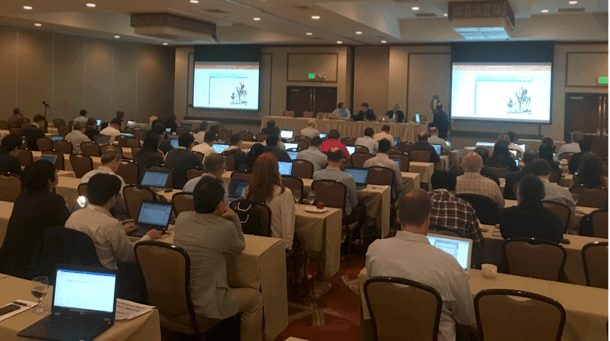
Recently I calculated that over 90,000 individual-contributor hours have been spent in the ETSI NFV face-to-face plenary meetings to date - and this doesn’t include working group interim face-to-face meetings and conference calls. In a typical week, there are at least seven different working group calls timed to enable participation by delegates located around the globe.
ETSI NFV has openly published over 60 specifications which define the functional blocks needed to deliver carrier-grade network performance in the telecommunications environment. Taking a page out of the open source playbook, ETSI NFV maintains an Open Area where draft specifications which are still being worked-on can be downloaded to enable the wider industry to see where the work is heading, and for developers to begin writing code.
Why is the ETSI NVF work critical?
The ETSI NFV work enables telecommunications operators to use cloud technologies to implement resilient network solutions able to deliver the rigorous service levels which underpin critical national infrastructures. The ETSI NFV work also enables domain-specific standards bodies such as 3GPP, Broadband Forum, IETF, MEF etc. to call out common foundation specifications which will enable their solutions to co-exist on the same virtualization platform. Open source communities also need to reference common specifications to ensure their solutions will be interoperable. The need for open source communities to reference the ETSI NFV work to avoid fragmentation is a topic I’ve become quite vocal about in recent contributions to international conferences.
Encouraging interoperability within an open ecosystem has been a key objective for ETSI NFV since it was launched. To drive this forward, ETSI NFV recently completed specifications which detail the REST APIs between key elements of the NFV Architectural Framework. Additional specifications, including the APIs exposed to Operations Support Systems (OSS), will be completed by the end of this year. This is a key piece of the puzzle to realize our vision for NFV. Bruno Chatras at Orange who chairs this work has blogged on this so I won’t cover it in detail here. Suffice to say; this new direction will massively accelerate progress on NFV implementation and interoperability.
Tutorial and Hands-on Demo Session
As many of the world’s key experts on NFV were present for the ETSI NFV plenary sessions we organized an NFV tutorial and hands-on demo session on Monday afternoon which I called a ‘SpecFest’. This enabled local technology people to meet and interact with the experts. I think the term ‘Hackfest’ is overused and I wanted to promote the idea that demonstrations of running code centered on adherence to detailed specifications could also be exciting. We sent invites to local cable operators, startups and Colorado University at Boulder to help broaden awareness of the ETSI NFV specification work. I wasn’t disappointed, over 70 delegates turned up and over 50 participants joined remotely. The tutorial and demo materials are freely available for download. The event exceeded our expectations, not only in the level of participation but also Nokia stepped up with the first public demonstration of running code implementing the ETSI NFV specs run live from their center in Hungary. It was truly a ‘SpecFest’!
Joining up with Open Source
Coincidently there was an OpenStack Project Teams Gathering (PTG) meeting taking place in Denver, and it was too good an opportunity to miss to join up the two communities for a mutual update. The OpenStack Glare Project intends to implement interfaces based on the ETSI NFV specifications, and ETSI NFV has just completed a gap analysis in relation to OpenStack. The opportunity to get together to share technical perspectives, build the relationship and figure out how to collaborate more closely, was timely. The CableLabs NFV software platform is centered on OpenStack and we are committed to open standards, so this type of collaboration is something we are very keen on.
Excellent Progress on ETSI NFV Releases
The ETSI NFV working groups met in parallel throughout the week with over 230 contributions to work through. Release 2 maintenance is close to being completed and new features for inclusion in Release 3 went forward for more detailed analysis including Network Slicing, License Management, Charging and Billing, Policy Management, etc. Excellent progress was made on specifying the Network Service Descriptor (NSD) and Virtual Network Function Descriptor (VNFD) with TOSCA. This augments the REST APIs I mentioned earlier.
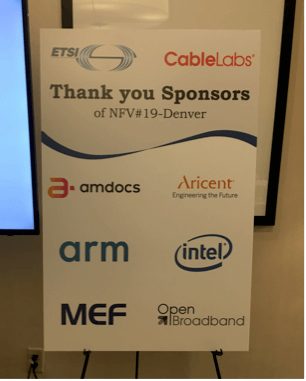
As a member of the ETSI NFV leadership team, I’ve been a keen advocate for ETSI NFV to strictly focus on work that is high value to the industry. Quality is critically important, we want to avoid work that burns time but doesn’t move us towards our goals. With this in mind, I was pleased to see new work items approved that address genuine gaps. These included Connection-based Virtual Services led by Verizon, NFV Identity Management and Security led by BT and NFV Descriptors based on YANG led by Cisco, amongst others.
The next ETSI NFV plenary will be held in Sophia-Antipolis December 5-8, 2017 and we are planning ahead for the second ETSI NFV Plugtests to be held at the ETSI Center for Testing and Interoperability (CTI) January 15-19, 2018. The first Plugtests were over-subscribed, so participating companies will need to register early!
CableLabs was extremely proud to host this event and we’d like to thank Amdocs, Aricent, arm, Broadband Forum, Intel and MEF for their sponsorship.
What is CableLabs doing in this space?
CableLabs has been working on SDN and NFV for over 4-years. We have studied the impact of NFV in the home environment and developed insights which smooth the way for virtual provisioning in the Access Network. We are a leading contributor to ETSI NFV and our NFV & SDN stack – SNAPS is part of OPNFV. We are keen to encourage interoperability for NFV and SDN solutions, CableLabs subsidiary Kyrio operates SDN-NFV interoperability labs at our Sunnyvale-CA and Louisville-CO locations which enable vendors and operators to work together.
--
ETSI NFV has created the foundation standards to deliver carrier-grade virtualization capabilities for the global telecommunications industry. You can find more info at ETSI NFV Industry Specification Group. Don't forget to subscribe to our blog to find out more about ETSI NFV in the future.
Don Clarke is a Principal Architect at CableLabs working in the Core Innovation Group. He chairs the ETSI NFV Network Operator Council and is a member of the ETSI NFV leadership team.
Virtualization
Network and Service Management – The Missing Piece for NFV
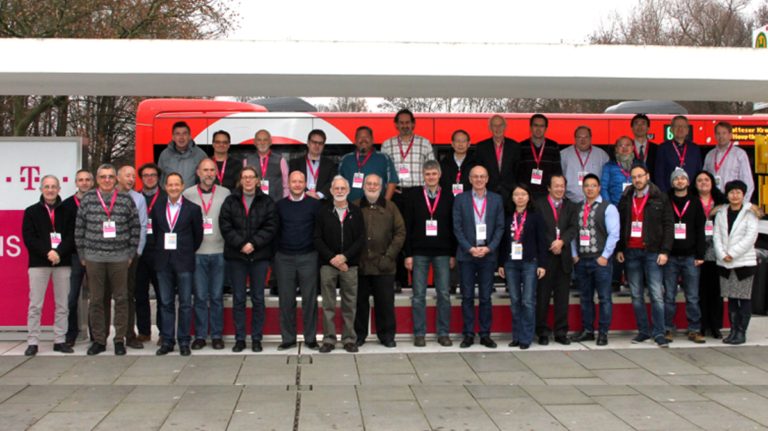
Network Functions Virtualization (NFV) enables telecommunications networks to be implemented in software running on high volume industry standard servers as outlined by network operators in a seminal white paper published in 2012. NFV standards have been under development in the ETSI NFV Industry Specification Group since the early part of 2013. The ETSI NFV work provides the foundation for NFV and is being referenced by standards organizations globally, and new open source software communities have sprung up to accelerate NFV implementation. I’ve written about industry progress on NFV in previous blogs but we still have some way to go before NFV is commonplace in telecommunications networks.
The key pieces of NFV, notably Virtual Network Functions (VNFs) run on industry standard compute platforms – basically datacenters; and must be dynamically configured and connected at scale to deliver tangible value; automation is absolutely vital for success. Cloud players such as Amazon and Facebook have mastered automation within the confines of their proprietary datacenters, and as a result their operations require orders of magnitude fewer people. New products and services appear at the speed of code, and customer self-service is taken for granted. Concepts that exploit automation such as Machine Learning are being applied which is supercharging the ability of cloud operators to optimize their systems and create cool new stuff. We in the telecoms industry need to also become masters of automation or we will be left behind in the inexorable march to a software defined future.
While the ETSI NFV Industry Specification Group has worked very hard on the “nuts and bolts” of NFV with a keen eye on automation (in my book the most important benefit of NFV), the industry hasn’t made much headway on the key pre-requisite: automation of the Operations environment. Collaboration to address this essential capability is vitally important for the industry to remain competitive and deliver what our customers need in the future.
Information Modeling and Network Automation
Two very important industry initiatives are underway that will accelerate progress. The first initiative is to harmonize information modeling approaches across the telecoms industry (standards and open source). Unless Standards Development Organizations (SDOs) in the different network domains align their information modeling approaches, network operators will have to deal with an ever increasing degree of complexity as they seek to create new networks and services based on NFV. The second is a new industry-wide effort to foster collaboration on Networks and Service Management.
Towards achieving these goals, in January 2016, CableLabs hosted the first multi-SDO and Open Source workshop on Information Modeling which was widely regarded as the moment when the industry realized the value of harmonization. Aligning Information Modeling approaches is a critical first step to achieving network automation (see the blog by my colleague Tetsuya Nakamura). Information models are the “templates” needed to orchestrate compute resources into a meaningful configuration. In the cloud environment, these templates are used routinely, and we need to use them as well, but unlike cloud operators who work in a proprietary, mostly homogeneous environment, telecoms network operators work in a heterogeneous environment spanning many different network domains and referencing standards coming from many different SDOs. Applying cloud technologies in such an environment is extremely complex. Fortunately, SDOs and Open Source communities have recognized this challenge and an unprecedented era of cross-industry collaboration is getting underway.
Multi-SDO Collaboration is not simple, or it would be routine. The first barrier is the focus of individual SDOs on a narrow domain. Other barriers are culture and modus-operandi, and leadership teams motivated by agenda and timelines specific to their domain. Not to mention the dreaded IPR which can stymie even the most worthy of collaborations.
Second Multi-SDO Information Modeling Workshop
To build and maintain momentum, Deutsche Telekom hosted the second Multi-SDO Information Modelling workshop in Bonn-Germany last month. I co-chaired the event with Klaus Martiny at Deutsche Telekom and Michael Brenner at GigaSpaces, and my CableLabs colleague Tetsuya Nakamura played a key role in organization. The workshop dovetailed with another milestone event, the first cross-industry workshop on Networks and Service Management organized by Deutsche Telekom which addressed the broader challenges for automating telecoms networks.
Participants from the following organizations presented their views on harmonizing information modeling: 3GPP (SA5), ARIA, Broadband Forum, ETSI NFV, IETF, IISOMI, ITU-T, MEF, NGMN, OASIS/TOSCA, ONF, OSM, OPEN-O, ON.Lab/CORD, and TM-Forum.
The discussions were intense and extremely positive. Clearly the spirit of collaboration and a sense of common purpose are as strong now as they were after the CableLabs hosted first workshop which bodes well for maintaining momentum on alignment. Follow-up collaborative activities are structured around a set of key topics which we identified as high priority to be addressed with named owners from different organizations who will be accountable for progress. A public WiKi has been created for anyone to follow progress. Activities include:
- Looking at Federated Information Models as a way to get to a Common Information Model.
- Aligning nomenclature amongst the different organizations in relation to Information Modeling and Data Modeling.
- Collecting Use Cases and Business Requirements as a way to bind the effort towards a practical goal.
- Creating and maintaining central repositories for the numerous information models and data models in use across the industry together with descriptive meta-data and open source tooling.
Achieving harmonization is vitally important for the industry to enable automation of the NFV operations environment so we are setting an aggressive timescale to build momentum through 2017.
What CableLabs is doing in this space
We have a number of activities around NFV and SDN that we are executing on behalf of MSOs. For example, CableLabs is progressing an intensive study of virtualized provisioning of the cable access network to enable programmability, our NFV/SDN reference platform is based on OPNFV and we are looking ahead to support 5G using an end-to-end virtualized architecture that includes low latency edge compute nodes located at the cable head-end. In addition, we are seeking to accelerate NFV/SDN interoperability through our subsidiary Kyrio which has built an interop lab where vendors can work together with operators to validate interoperability for their SDN and NFV solutions.
The NFV journey is only just beginning and 5G will be the first new wave of technology to be designed from the ground up using NFV and SDN technologies. The cable industry, with our low latency access network, is in a leadership position to advance these technologies for the benefit of MSOs and their customers globally.
Networking
ETSI NFV Continues to Build Momentum

Last year I blogged about ETSI NFV Industry Specification Group (ETSI NFV) progress. The ETSI NFV body of work has become firmly established as the key reference for both global standards bodies and open source communities. Last week I was in Dublin for the thirteenth ETSI NFV plenary meeting (NFV#13) hosted by Cobham Wireless and OPENET.
Why Was This Meeting Important?
NFV#13 was an important milestone for the ETSI NFV community, not only did it mark the start of the fourth year of work, but the final documents comprising ‘Release 2’ were scheduled for approval, plus a large body of new work was under consideration to be included in the work plan. The new work will comprise ‘Release 3’. It was sure to be a very intense week.
In my mind, NFV#13 was also an important test of the continuing relevance of the ETSI NFV community in the face of accelerating progress on NFV-related standards and open source, and NFV deployments are gathering pace globally. As it turned out, 210 delegates travelled to Dublin from all over the world, a similar number or slightly more than previous meetings in Europe. Membership continues to grow and now stands at over 290 companies including government bodies and academic institutions as well as vendors and network operators. The intensity of ETSI NFV work continues unabated which confirms the relevance of this forum to the industry.
As ETSI NFV Network Operator Council (NOC) chair, I was concerned to ensure that the operator group which now consists of 39 operators (CableLabs represents MSOs) would have adequate time to review the large body of new work to ensure it would be relevant to network operator needs. Under the leadership of co-chair Klaus Martiny at Deutsche Telekom, the NOC had carried out an analysis of the proposed new work program and this was referenced by the ETSI NFV Technical Steering Committee and working groups in Dublin to help guide their planning discussions.
The five working groups broke into parallel sessions after the opening plenary on Tuesday and managed to complete work on 12 documents, 3 of which were approved for immediate publication and 9 sent for remote consensus in the next four-weeks. In addition, 17 new work items were approved but there was insufficient time to consider all of the proposals put forward for approval in Dublin and the remainder will be discussed on an ETSI NFV plenary call in April. I am confident these will be approved in time for work to begin at or soon after NFV#14 which will be hosted by AT&T in Atlanta, May 3-6, 2016.
As a founder of the ETSI NFV forum, I am particularly interested that the work is timely and that it continues to be of high value to the industry. The current mandate from ETSI expires at the end of this year and there needs to be clarity on what will be the role of the forum in continuing to build the NFV ecosystem. With this in mind, I initiated discussions in the NOC on what should be the focus for ETSI NFV in 2017 and beyond. The outcomes of these discussions will be presented at NFV#14 and I will blog about them as soon as the direction becomes clearer.
It was an exhausting week for everyone considering the unprecedented intensity of the work program. The ETSI NFV community is working well together and there is a high degree of mutual trust amongst the participants which serves the industry well. The community has proved that it can both deliver and adapt to the changing needs of the industry as the NFV transformation takes hold.
What is CableLabs Doing in this Space?
CableLabs has been working in the SDN and NFV space for over three years with work spanning the breadth of the cable network. We will continue to be actively involved in ETSI NFV and related open source activities contributing insights from our R&D and Innovation activities. And we have established Kyrio, a wholly owned subsidiary of CableLabs to provide a collaborative environment for SDN and NFV integration and testing including an OPNFV lab. which is open to participation by external organizations.
If your organization is interested in participating in the OPNFV lab. please contact Wylie Nelson
Don Clarke is a Principal Architect at CableLabs working in the Core Innovation group.
Consumer
5G — The Beginning of an Exhilarating Journey
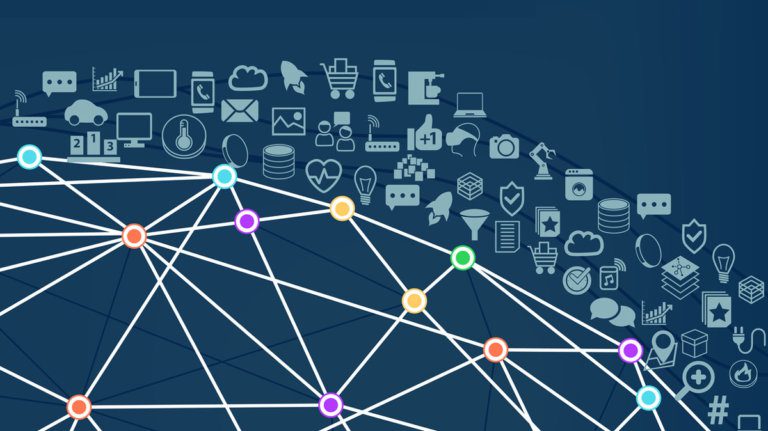
“5G” is the next step for the evolution of wireless technology beyond “4G-LTE” with the 2018 and 2020 Olympics acting as powerful Incentives for vendors to accelerate their product development.
A few weeks ago, I travelled to San Francisco to chair a session at the new IEEE SDN-NFV conference and to participate in a panel session at the IEEE 5G Summit taking place in Silicon Valley that same week. I have long been convinced that NFV and SDN would be key enabling technologies for 5G. My panel role was to talk about how the international standards effort around NFV and SDN would support innovation in the 5G space.
In the weeks preceding the conference, Verizon had announced plans for “5G” field tests. As a consequence, demand to attend the 5G Summit was much greater than the organizers had originally anticipated resulting in the event shifting to a larger venue. There was a capacity crowd of greater than 300 academic and industry researchers along with a sprinkling of business development types.
5G Target
Industry initiatives to define the target for 5G have identified eight key requirements for the technology:
- 1-10Gbps connections to end points
- 1ms end-to-end round trip delay (latency)
- 1000x bandwidth per unit area
- 10-100x number of connected devices
- Perception of 99.999% availability
- Perception of 100% coverage
- 90% reduction in network energy usage
- 10-year battery life for low power devices
We have all seen the impact that broadband connectivity combined with smart devices has had on our lives. Imagine the possibilities if this ambitious target could be realized!
Innovation in a 5G World
As the conference progressed, I became more and more excited about the innovation possibilities in a 5G-enabled world. There were a number of very informative presentations during the day, but the talk that made the most impact on me was the keynote by Professor Gerhard Fettweiss from the 5G Lab. I was floored by his vision for a “Tactile Internet” illustrated with powerful video demonstrations that showed if network latency (round trip delay) could be reduced below 10ms, the potential for machine to machine and human to machine interactions would become limitless. A surgeon undertaking remote surgery was one example, self-driving vehicles with real-time network assisted object tracking another. Of course safeguards would need to be in place to deal with loss of connectivity or faults, but you get the idea.
I am convinced the “Tactile Internet” will spawn a myriad of applications in every field of human endeavor. Many of which we cannot even conceive of yet. However a fellow delegate remarked that he didn’t think Gerhard’s vision would be realized any time soon. In my view he missed the point - a compelling vision is the critical first step for any new ecosystem to get started and I am sure that key elements of the tactile internet vision will be realized sooner than people think. The enabling technologies exist today. They just need to be brought together in the right way with standards that facilitate open innovation.
Other keynotes including those from AT&T and Google reinforced my impression that we are on the cusp of an unprecedented era of innovation driven by low latency, high bandwidth wireless connectivity embodied in what is being termed “5G” — but having far greater implications than simply wireless connectivity.
Back to reality and my panel, which was the final event of the conference. We were challenged with answering the imponderable question “what is 5G”. None of us was able to come up with an answer that satisfied the moderator since 5G is a far richer vision than simply an increase in wireless bandwidth or a 5G icon appearing on a smartphone handset.
What CableLabs is doing in this Space
The cable network will provide an ideal foundation for 5G because it is ubiquitous and already supports millions of Wi-Fi nodes in places where the majority of wireless data is consumed. It has high capacity for both Access and Backhaul. It is highly reliable and has low intrinsic latency because it is based on optical fiber which penetrates deep into the access network feeding wideband coaxial cables reaching all the way to the end-user premises. Moreover, it is a multi-node remotely powered access topology ideally suited to support the connection of the large number of small cells close to homes and businesses that will be needed for 5G.
A multi-faceted CableLabs R&D program is addressing the key technologies required for 5G. For example, we are developing end-to-end architectures based on SDN and NFV technologies that will provide the efficiencies and resource flexibility and adaptability required for 5G. We are studying the co-existence of wireless technologies and we have joined with leading industry organizations such as NYU WIRELESS to evaluate how spectrum in the millimeter wave region combined with the cable network will provide an economical foundation for 5G. CableLabs participated in the recent 3GPP RAN 5G Workshop where we outlined the CableLabs vision for converged broadband and wireless networks.
It is exhilarating to think that the 5G journey is only just beginning and it is going to be incredibly exciting because we will be visualizing how to architect a dynamically configurable 5G network based on the existing cable network and bringing it all together to serve the needs of cable operators and their customers world-wide.
Watch this space for blogs from my CableLabs wireless colleagues, and consider attending our new Inform[ed]: Wireless conference in New York in April.
Don Clarke is a Principal Architect at CableLabs working in the Virtualization and Network Evolution group.
Networking
A Hands-On Innovation Experience in Silicon Valley
When my boss informed me a few weeks ago that I had been selected to be a participant in an intensive four day “Innovation Boot Camp” at our offices in Silicon Valley, I was surprised and somewhat concerned that I would be taken out of circulation for a whole week. I admit that it also crossed my mind to question what a 40+ year R&D veteran would learn that was new. Moreover, it was my 60th birthday on the first day of the course so I wouldn’t be able to celebrate this once in a lifetime milestone with friends and family.
Actually, my wife and I had already agreed we wouldn’t make a big deal out of my 60th - I don’t normally celebrate being older as I am still 19 in my head, and I had already accepted an invitation to participate on a panel at the Open Networking Summit in Silicon Valley which happened to be the day before. And the Boot Camp was guaranteed to be interesting since it would be led by our CEO Phil McKinney, a well connected and highly regarded expert and author on innovation.
As it happens, it was one of the most valuable learning experiences of my career and I want to pass on a few thoughts that might draw others to question what you know about innovation.
The Boot Camp assembled bright and early Tuesday morning. We were a small class of sixteen MSO and CableLabs innovation leaders pre-assigned into four small groups for the duration. My group included colleagues from Comcast and Charter. Other companies participating in the Boot Camp included Cox Communications, CableVision, SCTE and an individual startup founder.
Day 1: Tuesday
The event opened with Phil McKinney taking us through his philosophy of innovation, brought to life with fascinating anecdotes coming from his amazing breadth of personal experience and connections across the industry. His examples sometimes brought back painful memories where I too had run into the wall, and moments when I was reminded how I had learned that lesson too. The session was riveting with room for plenty of interaction. I was in good company – the other participants were at least as passionate and opinionated about innovation as I am which boded well for an interesting and interactive week.
The Boot Camp focused on learning about how ideas are filtered and gated with an intensive program of experiential learning through real “into the wild” interactions with the Silicon Valley Innovation ecosystem. Through the entire week, we progressed hands-on learning based on short lectures. We learned about what questions matter, determined which customers were likely to be served by the proposed product or service, and we worked on our observation and active listening skills to prepare for an upcoming engagement with potential customers. The atmosphere throughout the week was relaxed and informal and new friendships were forged as we absorbed the Silicon Valley experience together.
Each day in the Boot Camp, battle-hardened Silicon Valley guest speakers imparted their knowledge in short 1-hour talks in an informal setting. They had no hesitation to deep dive questions we fired at them. We heard perspectives from Liberty Global Ventures on how a large corporation taps into external innovation. A leading market research agency explained how to test market reaction to ideas, and another speaker described a fascinating example of corporate innovation applying existing data to create a new proposition in the healthcare space. A leading creative design guru demonstrated how to use media to make an effective pitch. As someone who has fallen (as victim or perpetrator) into the “death by PowerPoint” trap too many times, I was grateful for the opportunity to learn some new tricks.
The four groups were challenged to develop an idea using the techniques we would learn, and pitch it to a judging panel which would include Phil McKinney. We were given a couple of topics to choose from: ‘Emotive Computing’ and ‘Reputation,’ plus profiles of real individuals who might be representative of our market.
That evening we embarked on our first venture “into the wild” - dinner at a Sunnyvale restaurant to interview the individuals we had selected from their profiles earlier in the day. These were San Francisco residents who had responded to an Event Gig listing on Craig’s List. After a few glasses of wine and an excellent Mediterranean buffet, everyone was relaxed and ready to go. For me, it was surreal to have the opportunity to test reactions to an idea with real people whom I had not met before. Needless to say, we were all animated the next morning sharing our insights from the experience. One lesson was that you can’t rely on a profile to predict reaction to an idea. And it is really hard to be objective when interacting with interesting people.
Day 2: Wednesday
The evening event was a brilliant surprise; the CableLabs team had organized a real Silicon Valley startup “Pitch” event at our Sunnyvale offices. It was a revelation that these events occur daily wherever there is significant startup activity including Boulder, CO and London as well as Silicon Valley. Anyone can pitch and anyone can turn up making it a great networking opportunity for would-be entrepreneurs and potential investors. A buffet with drinks ensured everyone had the opportunity to see demos, relax and network before the would-be startups pitched their propositions. The six 5-minute pitches were very entertaining and provided insights on what constitutes a good pitch compared with others that missed the mark. I had a chat with a couple of young British compatriots who had graduated from a London startup accelerator and were pitching for Silicon Valley investment. Neither was yet burdened with the obligations of family or mortgages and had nothing to lose in pursuing their dream. In chatting with these two inspiring young men, I found myself wondering how my life might have been different had I gone all in with my own startup in 1987 instead of progressing with it as (in my wife’s words) an “expensive hobby”.
Day 3: Thursday
The afternoon found the group on an air-conditioned coach heading for an unknown destination. On arrival we were amazed to find ourselves at the HQ of Electronic Arts and the privileged guests of Scott Cronce -- one of the world’s top game technologists. This guy is mobbed by hard core gamers every time he is spotted at a gaming event. State-of-the-art networked games stretch just about every aspect of hardware and software performance and gamers expect ever deeper levels of immersion and emotional involvement. It is a risky business requiring absolute market focus. It can take up to four years to implement a modern networked game during which time technology and fashion will have moved on, and gamers take no prisoners if a game flops. The hour we spent with Scott was one of the most memorable in my career. I imagined that this modest guy could have long ago left it all behind to enjoy the fruits of his creativity, but he is just as passionate today as I imagined he was when he was working as a chef to fund his game startup. His is a classic Silicon Valley success story.
Afterwards we had pizza and beer in the modest Palo Alto offices of Pebble, the smart watch startup. These young Canadian graduates raised over $10M in Kickstarter crowd funding and have been surfing an ever increasing wave of demand ever since. I have been a hardware geek since my early teens and I had huge respect for them in taking the plunge to design a wearable technology from the get go. Imagine the nightmare scenario of a million returns if there was a hardware design problem! I think hardware will become the ‘new software’ as sensors get embedded in our lives and it becomes increasingly hard to differentiate pure software propositions. The advent of low cost programmable hardware platforms such as Raspberry Pi and Arduino enables more students to explore hardware-based ideas. Not to mention increasingly capable and affordable 3D printing technology which will enable hardware to be packaged in interesting new ways.
Day 4: Friday
Our final day dawned all too soon. We had been feverishly tuning our pitches to take into account what we had learned during the week and it was time to put our creativity to the test in front of Phil McKinney and our peers. It didn’t matter who won (it wasn’t my team), because we had all had a lot of fun and we had unique experiences that changed the way all of us view innovation and creative life. Just as importantly, we established new relationships and joined what is sure to become a growing network of Innovation Boot Camp graduates who will share our experiences – what works, what doesn’t work as we encourage the growth of an innovation culture within our organizations.
CableLabs Innovation Boot Camp is held periodically and announced on the CableLabs web site several months ahead of time. Please contact Christian Pape if you would like more information.
Don Clarke is a Principal Architect at CableLabs working in the Virtualization and Network Evolution group.
Networks
OPNFV Builds Momentum With First Code Release

Today sees the first OPNFV release known as ‘Arno’ (OPNFV releases are named after rivers) which OPNFV has been busily creating since the community was launched last September. In my blog celebrating the OPNFV launch I outlined the importance of open source to stimulate innovation and accelerate progress on implementation. At CableLabs we are very keen on the open source approach because it enables the industry to collaborate to build common features while avoiding duplication of effort. This enables everyone to focus on product development and service creation. We have been eagerly awaiting this first release as it provides the foundation for our virtualization projects and we will be proposing to bring in our Virtual Business CPE APIs for the next OPNFV release.
The initial scope of OPNFV is focused on the NFV Infrastructure layer of the ETSI NFV Architectural Framework as shown below:
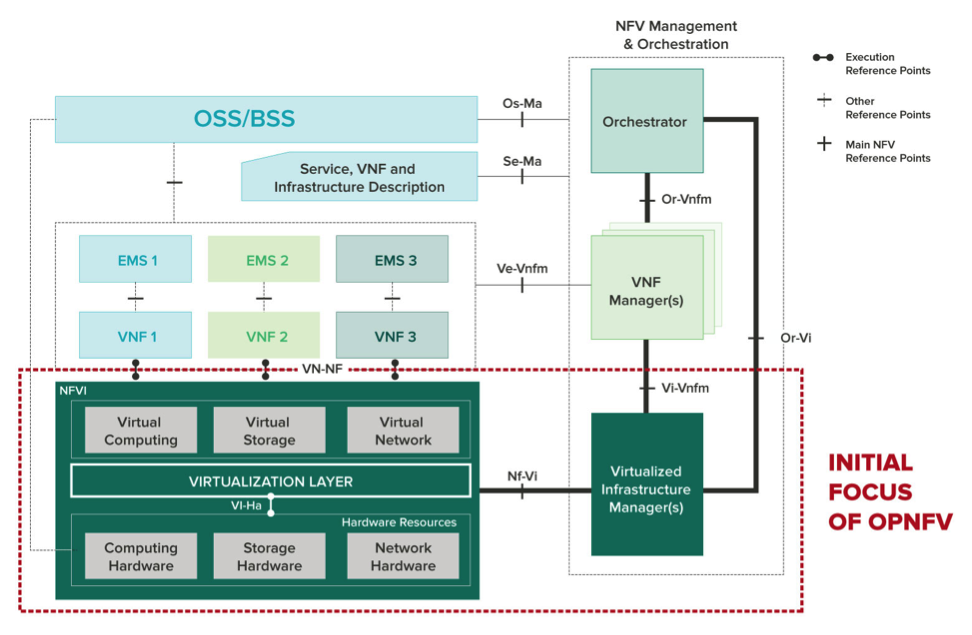
OPNFV Scope
Bounding the scope of OPNFV to the NFVI in this first phase has enabled this new global community to focus on rapidly creating a software development framework and for the participants to get to know each other and build awareness around this new topic through deeper involvement in a smaller set of projects.
We congratulate the OPNFV community on this achievement. The community has solved a lot of open source integration problems and created and debugged toolsets that would otherwise have had to be done independently and repeatedly in different labs. OPNFV is proving the value for the industry to work together to do the heavy lifting once.
There was a lively debate at the first OPNFV Hackfest in Prague on whether it was better to include more features in the initial release but to allow more time for development, or to release earlier with fewer features. We argued for early release to enable the industry to become familiar with the tools and to start to accrue learning as quickly as possible. This release will result in more developers becoming familiar with the OPNFV platform more quickly and to contribute to future OPNFV releases as well as their proprietary innovation on top of the platform.
The OPNFV Arno release enables the industry to create NFV integration platforms according to a common baseline thereby accelerating collaboration and shared learning. Full details of what’s included in the Arno release can be found on the OPNFV website, but as a quick summary, it includes the base Operating System (Linux CentOS), SDN Controller (OpenDaylight Helium) and Infrastructure Controller (OpenStack Juno).
CableLabs considers open source and formal standards processes to be complementary and we are actively involved in both. We actively contributed to the OPNFV ‘Pharos’ Testbed infrastructure project including contributing governance documents based our vendor-neutral test and certification experience. We are involved in the new OPNFV Certification & Compliance Committee and we are building OPNFV reference platforms at our Sunnyvale-CA and Louisville-CO locations to integrate and validate our collaborative open source development on behalf of the cable industry. We will be providing feedback to OPNFV and the ETSI NFV ISG as well as contributing our own code.
The next few months are going to be very exciting as we begin to see the ETSI NFV ISG Architectural Framework brought to life through the efforts of the OPNFV community and we’ll be able to share insights on NFV performance and interoperability because we’ll all be using a common infrastructure configuration.
Don Clarke is a Principal Architect at CableLabs working in the Virtualization and Network Evolution group.
Networks
NFV and SDN: Paving the Way to a Software-Based Networking Future

When ONF Executive Director Dan Pitt invited me to contribute a blog post, it brought to mind our interaction in the summer of 2012 on how to treat SDN in the seminal NFV White Paper I was then editing. The operator co-authors were keen to ensure that SDN and NFV were positioned in the paper as being complementary. This was important because we wanted to create momentum for NFV by highlighting use cases that did not require the then perceived complexity of SDN. As soon as the ETSI NFV Industry Specification Group (NFV ISG) was launched, we engaged with ONF, recognizing its key role in championing an open SDN ecosystem. And in 2014 the NFV ISG entered into an MoU with ONF to facilitate joint-work.
The vision for NFV was compelling because the benefits could be readily attained. By replacing network appliances based on proprietary hardware with virtualized network functions (VNFs) running on industry standard servers, operators could greatly accelerate time to market for new services, and operations streamlined through automation. Moreover, important NFV use cases (e.g. virtualized CPE) would not require massive systems upgrades — a huge barrier for innovation in telecoms. We are seeing this first-hand at CableLabs, where we have been able to prototype virtualized CPE for business services and home networks on a two-month development cycle.
In contrast, the simplified definition of SDN- the separation of control plane from data plane -in my mind does not adequately convey the compelling benefits of SDN. The term ‘Software Defined Networking’ should mean just that, every element of the network, including the VNFs and network control should be implemented within a fully programmable software environment, exposing open interfaces and leveraging the open source community. This is the only way to create an open ecosystem and to unleash a new and unprecedented wave of innovation in every aspect of networking.
NFV releases network functions “trapped inside hardware” (a description I stole from an HP colleague) achieving tremendous benefits. But VNFs must be dynamically configured and connected at scale to deliver tangible value. While today’s telecommunications operations support systems (OSS) are adequate for static NFV use cases, the real potential for NFV to transform networking can only be realized through SDN control. Consequently, SDN represents much more than the mere separation of control plane and data plane.
Given telecommunications networks are deployed at massive geographic scale, it is a hard sell to convince thousands, or even millions of customers that their services will be migrating to a new network platform where their services will not be quite the same but prices won’t go down. Couple that with the significant time and cost to upgrade the OSS, wide ranging operational processes changes, and the need to validate that the new platforms are sufficiently stable and reliable, not to mention the obligations of regulation, it is not surprising that there is hesitancy to contemplate significant telecommunications network transformations.
Consequently, the telecoms industry has resorted to decades of incremental network upgrades which have piled legacy functionality on top of legacy functionality to avoid the costs and risks of wholesale network and services migration. In the face of these realities, SDN was perceived to offer insufficient benefit to justify significant investment except in niche areas where it could be overlaid on top of existing systems. Furthermore, the idea of logically centralized SDN control is very scary to network designers who don’t readily understand abstract software concepts and who lose sleep striving to deliver reliable connectivity at massive scale, with relentless downward pressure on costs.
Just over two years into the NFV revolution, it is clear that the emergence of NFV has galvanized the industry to embrace software-based networking; short-circuiting a transition that might otherwise have taken years. The revelation that NFV can be deployed in digestible chunks, without massive system upgrades has forced network designers to take notice. After all, it is difficult to ignore a pervasive industry trend when vendors’ product plans have morphed into software roadmaps!
Given that NFV is now accepted by all major network operators and some have already made significant announcements, there is no turning back. Leading vendors have committed to NFV roadmaps and analysts talk about ‘when’ and not ‘if’ NFV will be deployed. More importantly, SDN and NFV are now frequently discussed in the same breath. In my mind, the distinction between NFV and SDN is becoming an artifact of history, and the terms will ultimately be subsumed by a software-based networking paradigm, which itself will emerge as an integral aspect of Cloud technology.
The emergence of NFV with SDN is accelerating the evolution of cloud technologies to satisfy the stringent requirements of software-based telecommunications networks. Whereas a web service could momentarily stall with minimal customer impact while a virtual machine reboots, some business-critical network services cannot tolerate loss of connectivity even for a few milliseconds. Therein lies both challenge and opportunity. Challenge because meeting stringent telecommunications availability and performance requirements is not easy as evidenced by the ETSI NFV ISG’s deliberations. Opportunity, because I foresee an unprecedented wave of telecommunications innovation on a par with the birth of the Internet.
Carrier-grade network resilience (e.g. 5-nines and beyond) will be achieved by pooling virtualized resources, fault management will be supplanted by autonomic self-healing networks that can not only withstand equipment failures but can even rapidly recover from large scale natural disasters by instantly migrating network capacity to remote location as demonstrated by NTT DOCOMO et al in the aftermath of the Fukushima disaster. And exciting new routing paradigms such as intent-based networking and content-based networking will become feasible in a much earlier timeframe with innovation galvanized by the potential for imminent experimentation on deployed infrastructures. I could go on…
The genie of software-based networking — where synergies between NFV and SDN result in significantly greater capability than either could deliver alone — is now truly out of the bottle. The ultimate challenge is to encourage growth of an open telecommunications ecosystem, where operators and vendors can work together to create and deliver value to their customers. Energized by the NFV ISG and ONF, among other industry groups, and open source projects that are becoming increasingly important, the reality is just around the corner.
Don Clarke is Principal Architect for Virtualization Technologies at CableLabs and Chairman of the ETSI NFV ISG Network Operator Council.
Networks
ETSI NFV Industry Specification Group Publishes Second Release of Documents

In September, I blogged about the launch of the Open Platform for NFV (OPNFV) initiative, this week saw another significant event, the second release of ETSI NFV Industry Specification Group (NFV ISG) documents. These documents cover the following NFV topics:
- Architectural Framework Revision 2
- Infrastructure
- Management and Orchestration
- Performance & Portability Best Practices
- Resiliency Requirements
- Security
- Software Architecture
- Terminology
These documents will become the key reference for the industry as we continue our journey towards a software-based networking future and they are openly available on the ETSI website.
The NFV ISG was launched in October 2012 with publication of a joint-operator white paper heralding NFV as the future direction for networks. As editor of that paper, I have never ceased to be amazed by the enthusiasm of network operators and vendors to work together to drive industry progress on NFV. From just thirteen operator signatories to the original white paper, the NFV ISG has grown to over 240 companies including 37 network operators with CableLabs representing our cable operator stakeholders.
I have produced a slide pack which outlines the objectives and scope for the NFV ISG in the next phase of work. It also provides a detailed overview of the work program which is a useful guide to what is going on in the NFV ISG.
Why are these documents Important?
The NFV ISG released its first documents in October 2013 after just 10 months and they immediately became the key reference for vendors and operators to progress dialogue on NFV product roadmaps and future network migration. This latest release of documents builds on that work and will help provide the clarity needed for vendors to commit to product development and to help achieve interoperability at the key interfaces in an NFV infrastructure. They will also help standards development organizations and open source communities scope their work to address gaps and avoid duplication of effort.
A detailed overview of the latest NFV ISG documents and a commentary on industry progress is provided in the latest joint-operator white paper.
What is CableLabs doing in this space?
CableLabs has been working in the open networking and virtualization space for over two years and we have a number of SDN and virtualization R&D projects in progress on behalf of our cable operator stakeholders. In particular, we are working on virtualizing the Converged Cable Access Platform (CCAP) and customer premises equipment (CPE). We are also looking at how virtualisation can be applied in the home network to simplify operations, reduce costs and improve customer experience.
The vendor-agnostic, non-profit environment at CableLabs is unique and ideally suited to collaborative R&D. We have implemented software-based network platforms at our Sunnyvale and Louisville locations and we will continue to be actively involved in the NFV ISG contributing insights from our R&D activities and vendor-neutral testing.
Don Clarke is a Principal Architect at CableLabs working in the Advanced Network and Applications Group progressing virtualization technologies.
Networks
CableLabs Founding Member of Open Platform for Network Function Virtualization

Almost exactly two years after a group of 13 network operators launched Network Functions Virtualization (NFV) onto the world stage, there is now another seismic industry shift taking place towards using open source software for networks. Open Platform for NFV (OPNFV), which launched today, is a new open source initiative that brings together the network and software industries to accelerate adoption and interoperability for NFV solutions based on open source. OPNFV will create a reference platform where performance and interoperability of open source NFV solutions will be validated. As one of those involved in the early discussions that led to the creation of OPNFV, I am extremely pleased that we have been able to help bring into existence this new forum. CableLabs hosted the inception meeting for OPNFV at our location in Sunnyvale in June and we are proud to be a founding member of OPNFV. CableLabs’ Director of Advanced Networks and Applications, Chris Donley, will serve on the OPNFV Board.
What is NFV?
NFV is the most exciting development I have seen in my 40+ years in the industry. NFV is a new way to implement network functions as software instances running on industry standard servers. Proprietary hardware appliances will become obsolete except for the most specialized applications. Some examples are illustrated below:
For the first time network designers will not be limited by the constraints of fixed hardware to design their networks. We have more flexibility to select best-of-breed features; we can deploy them at Internet speed; and we can avoid the nightmare of an accelerating hardware obsolescence cycle driven by consumer devices. At last we can design networks able to adapt in real-time to services demand using industry standard servers that can be loaded with new software on the fly to deliver a different mix of services depending on demand, optimizing equipment utilization while minimizing energy consumption. The ability to implement new types of resilience schemes with almost any fault management capability that can be imagined is particularly exciting. CableLabs is actively involved in the ETSI NFV Industry Specification Group (NFV ISG) the leading industry forum driving implementation of these new concepts. The NFV ISG work will be an important reference for OPNFV. NFV enables an unprecedented degree of innovation in the networks space which the industry is only just starting to grasp. I expect a blizzard of startups to appear offering new approaches for every aspect of networking. I’m also participating in an international dialogue with academia to encourage NFV research, and new courses to train the next generation of engineers to be multi-skilled in networks and software.
Why is Open Source Important?
As a long time stakeholder in the traditional telecommunications standards process, it has often been frustrating to have to wait for standards to be agreed before we could get on with trials and start deployment to gain the business benefits from new network technologies. It is even more frustrating when progress is blocked - sometimes for years, by intractable technical arguments or commercial positioning. In today’s fast paced technology-driven competitive world where commercial oblivion could be just one click away, the waterfall approach to bringing in new technology does not work anymore; we need to dramatically speed up and simplify standards development in our industry. In stark contrast, the IT industry has embraced the model of open source, where a community of developers works collaboratively and individually to create pieces of software that can be rapidly and continuously integrated to produce working prototypes and rapidly expose bugs. With the open source approach, specification and implementation occur simultaneously resulting in very fast progress and an open innovation dynamic where everyone contributes to build common features, avoiding duplication of effort and enabling everyone to focus on product differentiation. The openness of this ecosystem guarantees out of the box thinking and a global innovation dynamic decoupled from geography or the companies for whom the developers work. While CableLabs considers open source and formal standards processes to be complementary and we will continue to be actively involved in both, we are increasing our focus on accelerating innovation by using open source to rapidly develop prototypes validating our approaches.
What is CableLabs doing in this space?
CableLabs has been working in the open networking and virtualization space for over two years and we have a number of SDN and virtualization R&D projects in progress on behalf of our MSO stakeholders. In particular, we are working on virtualizing the Converged Cable Access Platform (CCAP) and customer premises equipment (CPE). As part of those projects, we have a number of our own developers actively developing prototypes which we are contributing to open source projects such as OpenDaylight. For example, CableLabs developed a CMTS plug-in for OpenDaylight that was used by several vendors to demonstrate their SDN and NFV solutions at last week’s SCTE CableTec Expo conference in Denver and that has been incorporated into the OpenDaylight ‘Helium’ release. The vendor-agnostic, non-profit environment at CableLabs is unique and ideally suited to open source development in collaboration with vendors. We have implemented open source reference platforms at our Sunnyvale and Louisville locations and we intend to be an active contributor to OPNFV through both code contributions and vendor-neutral testing.
Don Clarke is a Principal Architect at CableLabs working in the Advanced Network and Applications Group progressing virtualization technologies.



